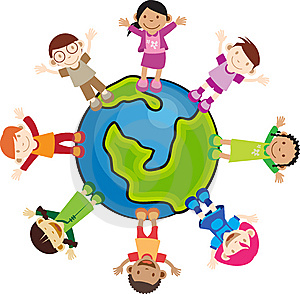Argument gets a bad rap. A parent of more than one child will threaten to "come up there" or "pull over the car" unless arguing siblings immediately cease and desist. Of course arguments are of varying quality. The type that drives parents to tears is similar to the following excerpt from the classic Monty Python "Argument Clinic" sketch. The premise is that the customer ("M" below) has paid for an argument. The "no you didn't" / "yes I did" exchange had been going on for about a minute or so. The paying customer has had enough.
_____________________________________________
O: Oh yes I did!
M: No you DIDN'T!
O: Oh yes I did!
M: Oh look, this isn't an argument!
(pause)
O: Yes it is!
M: No it isn't!
(pause)
M: It's just contradiction!
O: No it isn't!
M: It IS!
O: It is NOT!
M: You just contradicted me!
O: No I didn't!
M: You DID!
O: No no no!
M: You did just then!
O: Nonsense!
M: (exasperated) Oh, this is futile!!
(pause)
O: No it isn't!
M: Yes it is!
(pause)
M: I came here for a good argument!
O: AH, no you didn't, you came here for an argument!
M: An argument isn't just contradiction.
O: Well! it CAN be!
M: No it can't!
M: An argument is a connected series of statements intended to establish a proposition.
O: No it isn't!
M: Yes it is! 'tisn't just contradiction.
O: Look, if I *argue* with you, I must take up a contrary position!
M: Yes but it isn't just saying 'no it isn't'.
O: Yes it is!
M: No it isn't!
O: Yes it is!
M: No it isn't!
O: Yes it is!
M: No it ISN'T! Argument is an intellectual process. Contradiction is just the automatic gainsaying of anything the other person says.
O: It is NOT!
M: It is!
O: Not at all!
_____________________________________________
This is the the type of argument we don't want to encourage. It involves no critical thinking. As teachers we should encourage critical thinking, reasoning, and skills of persuasion. Children and teens do NOT have any problem when it comes to opinion. They have strong opinions about foods, sports and music. They may be challenged to come develop an opinion about ethics, politics or philosophy. We do too as adults. Not all of us made a beeline for a particular corner during the four corners exercise. We have an inner conversation where we ask ourselves, well what do I think about tenure/guns/Obama? We feel a need to consider all sides to an argument, and that sometimes makes it difficult to arrive at an opinion. However, this inner dialogue is excellent if we want to make an argument in support of our position once we've decided upon that position. If we're trying to convince someone on the fence, it helps to understand their perspective.
Students should be encouraged to find support for their argument, to provide evidence and logic that makes their position understandable and convincing. They need to respect the other side, and this consideration is often lost on children, and adults too - just listen to any right or left wing talking head. One area where I've noticed the breakdown of both decorum and convincing argument is in the area of blogs. Witness the following exchange excerpt on CNN.com in response to a current story about the Israeli military action in the Gaza Strip.
_____________________________________________
Pat Condell to Ghost • an hour ago
Israel is just another Apartheid South Africa, but the difference is that Israel has got very powerful
and wealthy lobby in the US and Europe who will make sure that videos of their systematic crimes are not shown on main stream media like CNN/FOX NEWS/CBS/MNSBC/BBC.
MostWonderful to Pat Condell • an hour ago
Go back to reading your mein kampf. You disguise your hatred for the Jew in your criticism of Israel. In 500 years you haters haven't changed a bit.
Makx to MostWonderful • 44 minutes ago
You made laugh; because I wrote that "soon they will use their anti-Semitic card", to block any free debate, and you did.
shermanist to Makx • 40 minutes ago
Ironically, we can't read the mein kampf since the Jews have all the remaining copies...if you read it from an Old Testament perspective, it's eerily similar to how Jews see the world. The difference between Hitler's perspective and the Jewish perspective is minimal.
Makx to shermanist • 32 minutes ago
"Dr. Lisa Rosenberg was removed from JFK-bound flight in Florida after accusing woman of being ‘a Palestinian murderer"
Not only that, but she used the racial card and accused the victim of being anti-Semitic.
Makx to shermanist • 37 minutes ago
Indeed, but please don't forget another pillar of that hate ideology "Protocols Of Elders Of Zion".
Barasheit to shermanist • 14 minutes ago
See [PDF]
Mein Kampf, by Adolf Hitler - Angelfire
You can read it all you want and should read it. It shows the real mentally ill, jealous child for what he was.
and... Everything you said was a lie. But that is ok with Allah, because he approves of that.
_____________________________________________
I hate reading these posts, because it's just plain depressing. I think there should be a requirement that anyone commenting on a website should disclose their real name, how many hours of daylight they receive and age. My theory is that you'll see "Age 12" and "lives in basement" more frequently than not. You and I might might have differing opinions about Israel's actions, the legitimacy of HAMAS, the settlements or the future of Jerusalem, but we should be able to argue our positions calmly, logically, and all the while respecting the opposing side. I'm convinced that posters such as these resort to ridiculous claims or personal attacks because they're unable to express their thoughts in an adult, reasonable and ultimately persuasive manner. As teachers, we should do our best to prepare our students to read critically so that they can make informed decisions which they can defend effectively, and form opinions which they can argue logically and respectfully.
No we shouldn't!
Yes we should!
No we shouldn't!
ENOUGH!


























